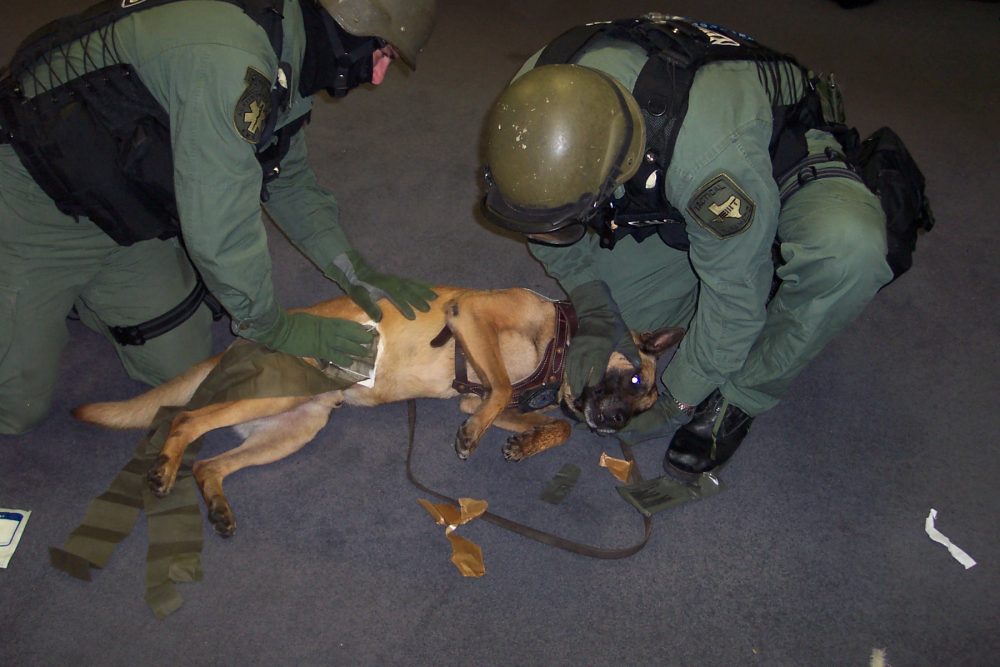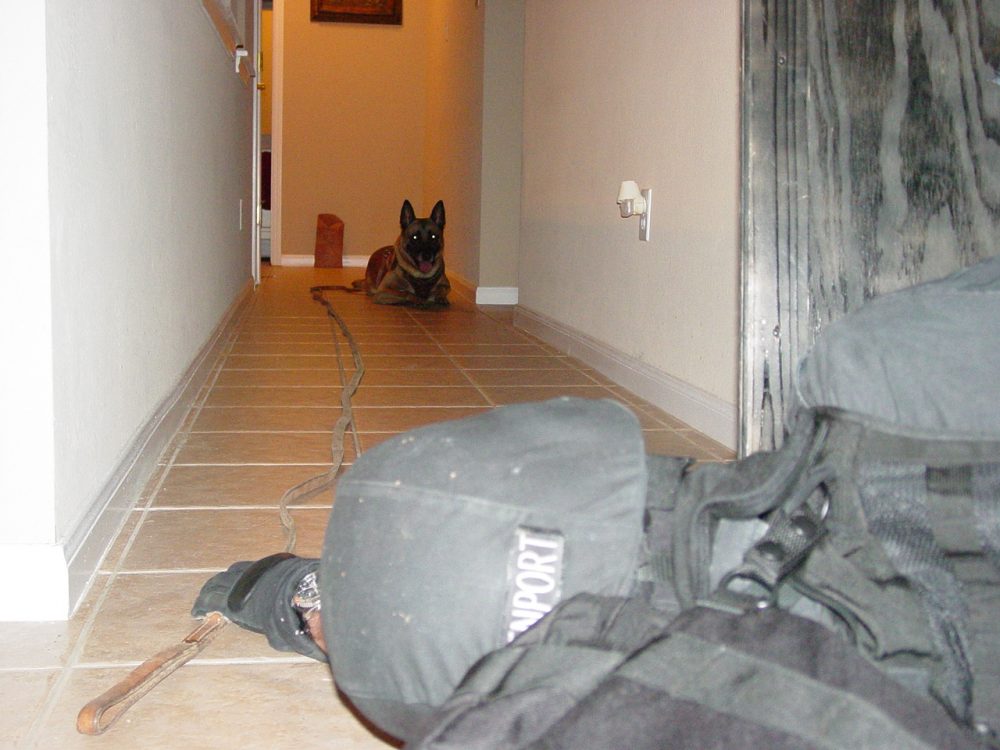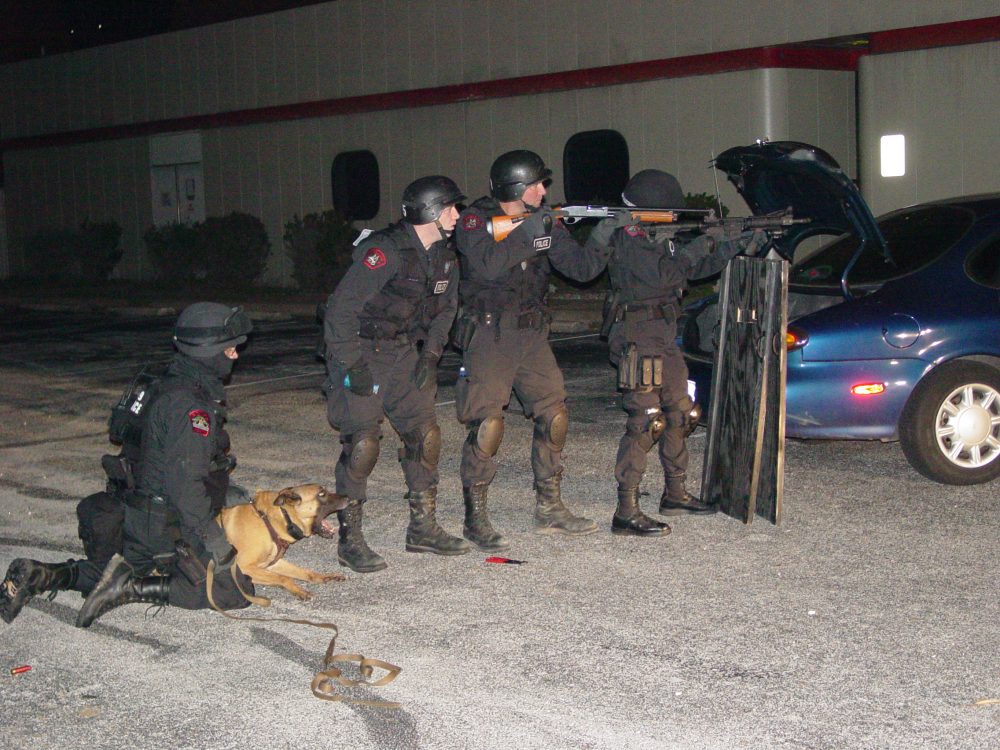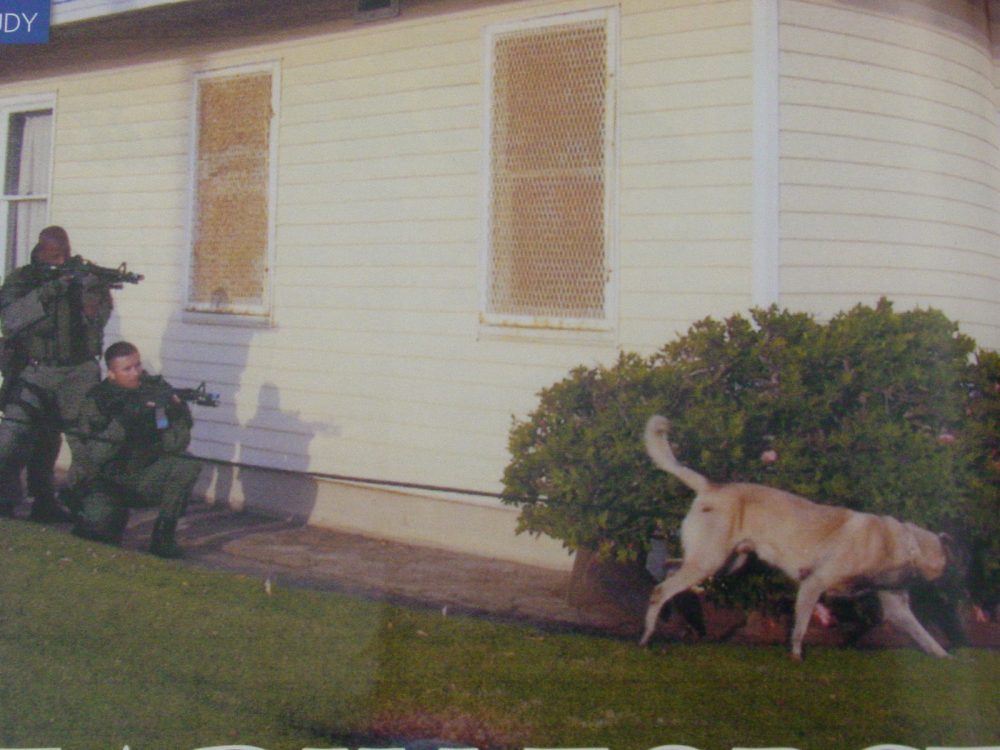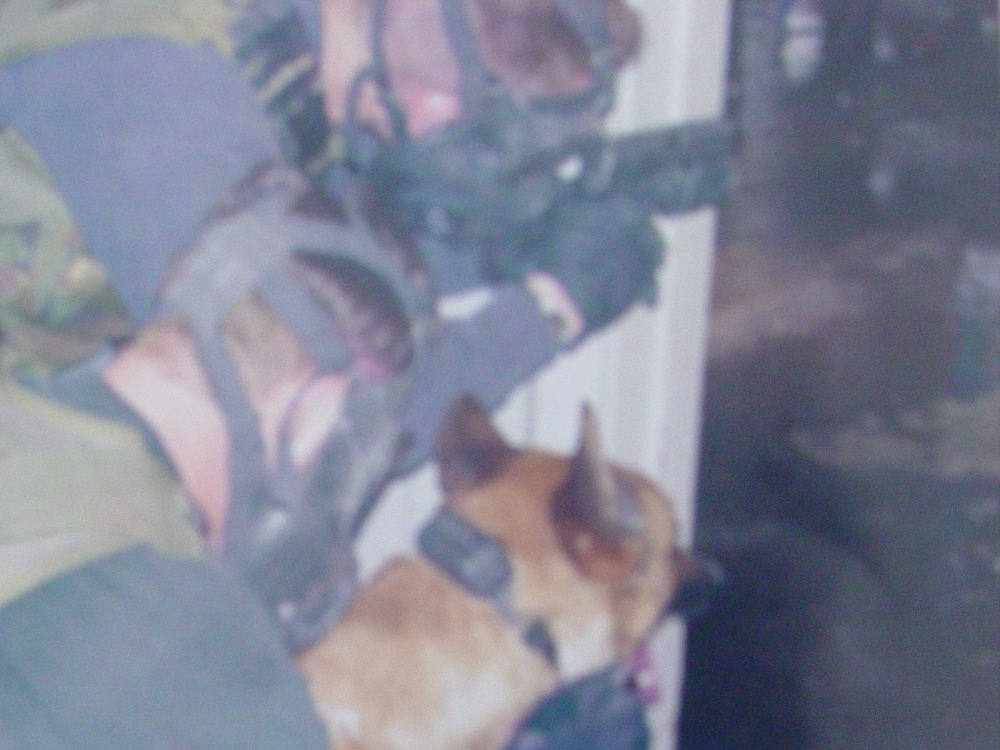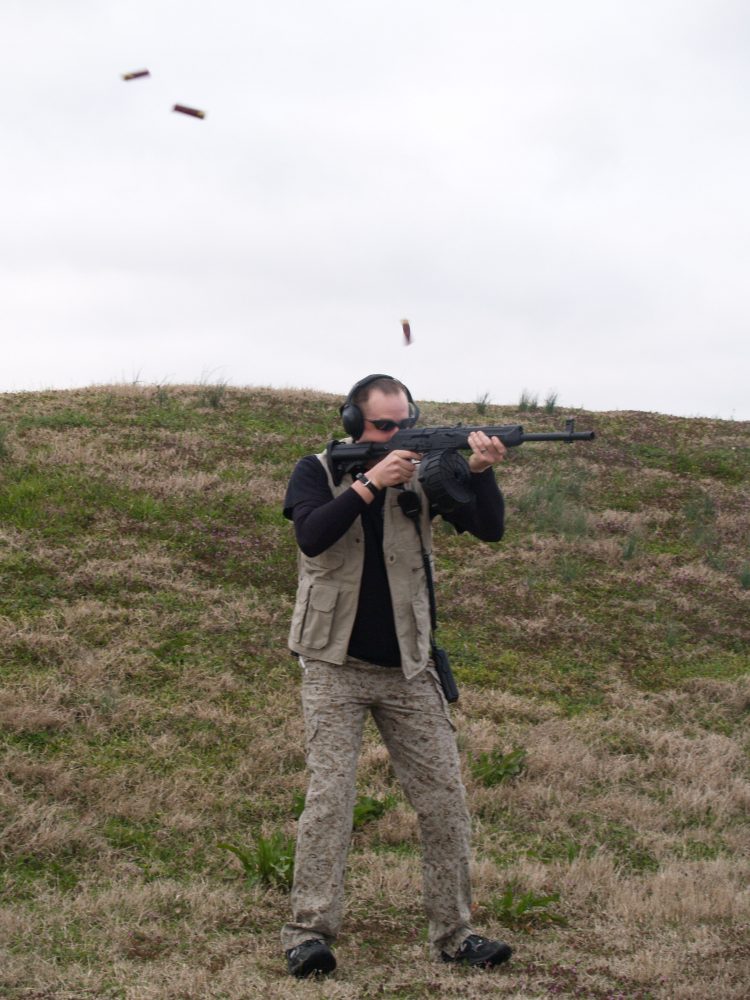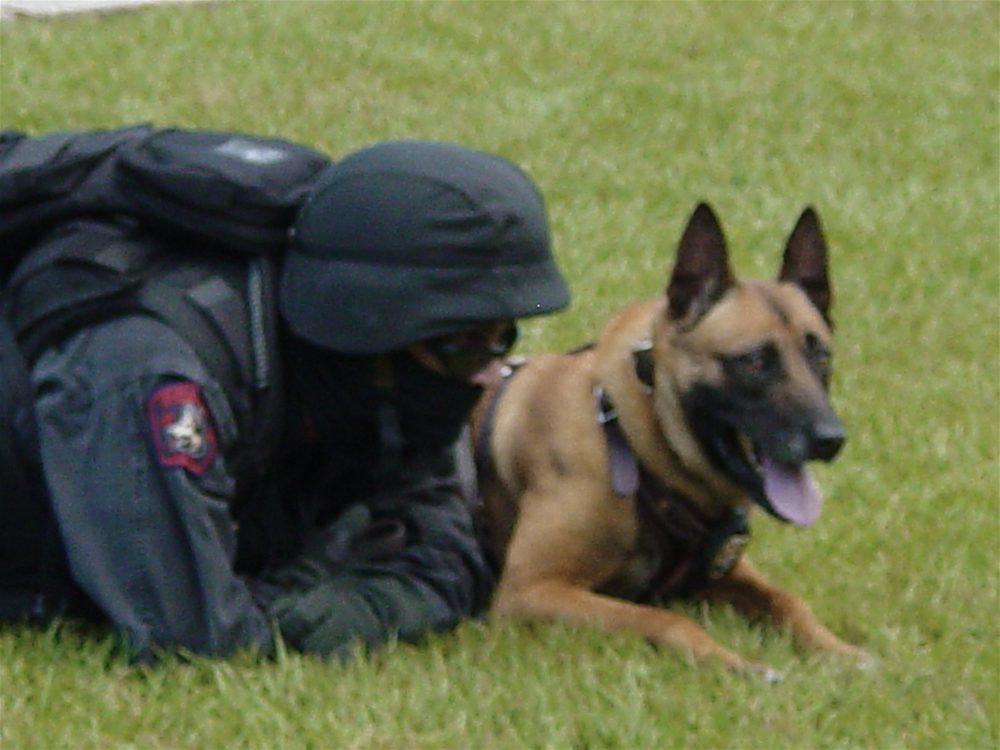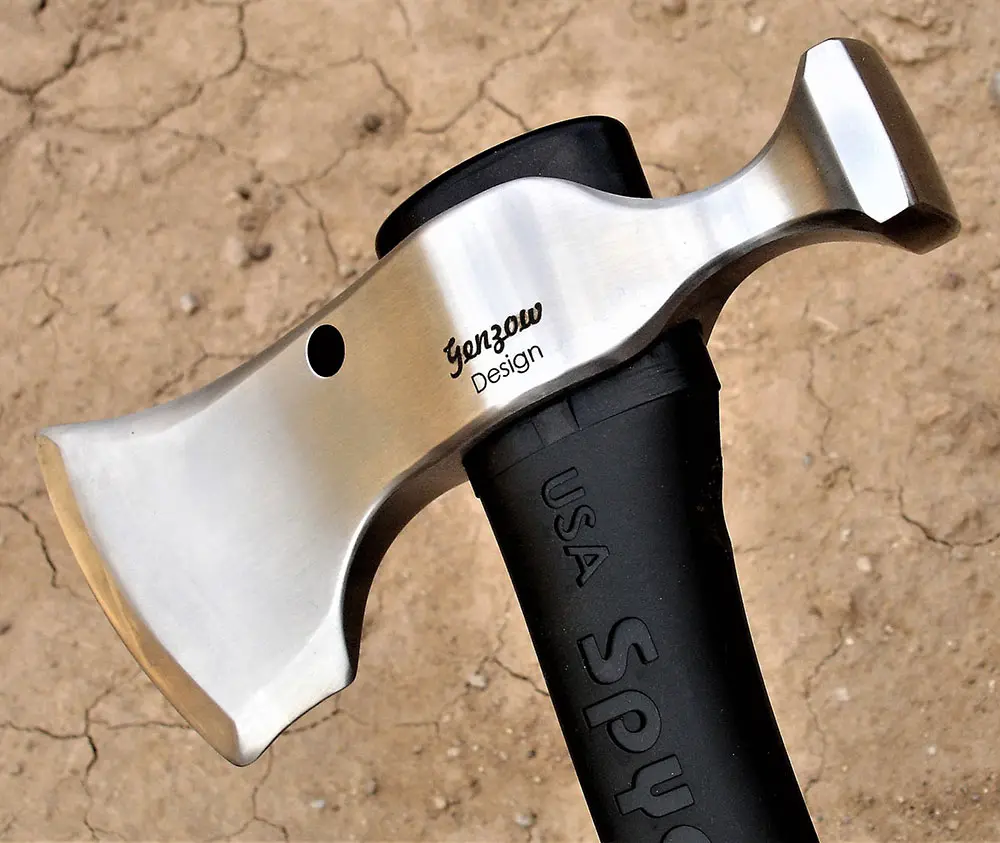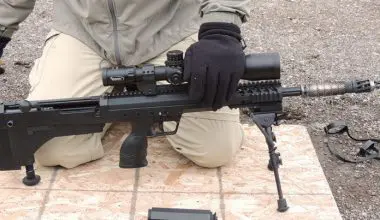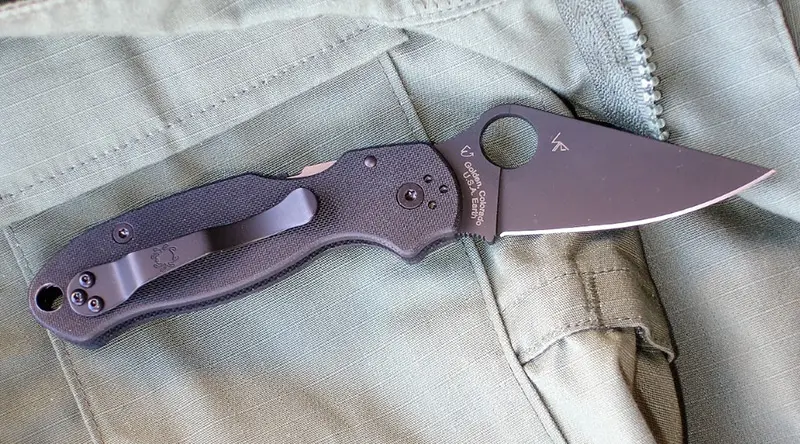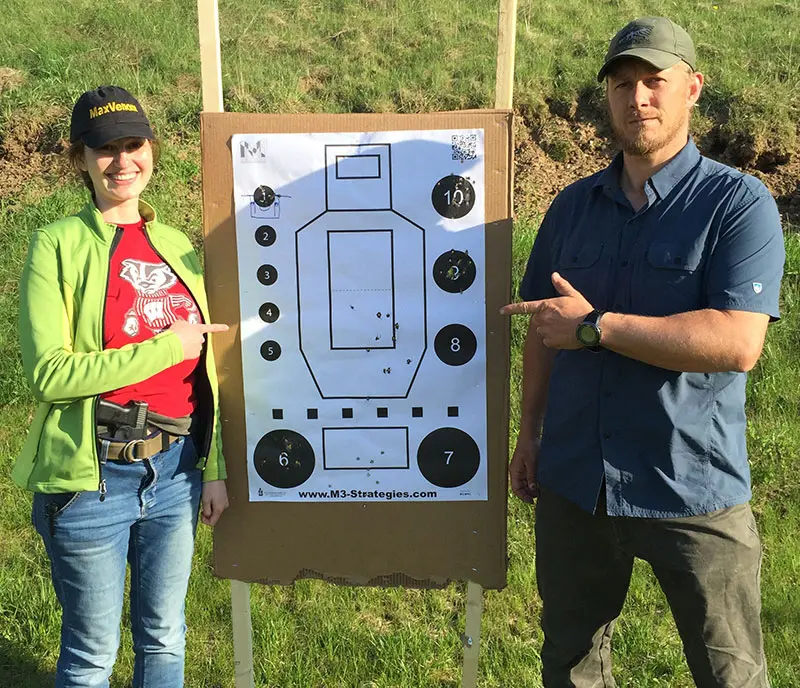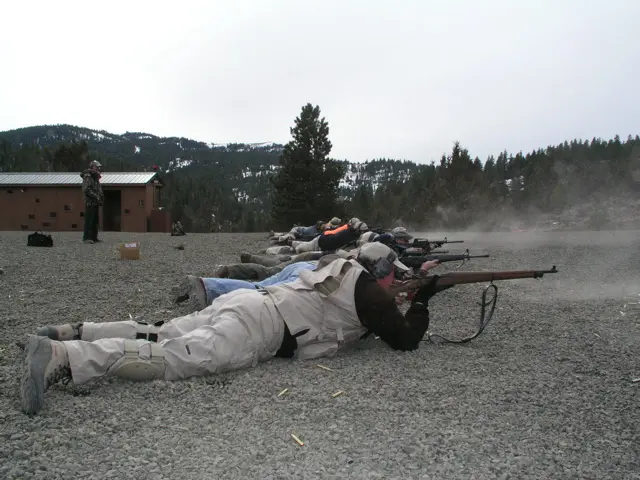Having trained medical personnel on hand to treat injured K9 at the scene can save injured dog’s life, as well as officers.
Since its initial concept in the 1970s, SWAT teams and tactics have evolved dramatically, due to the explosive rise in technology to assist operators in safely bringing crisis situations to a close. With the improvements in night vision, optics, ballistics, ballistic protection, weapons and hardware, SWAT teams can call upon these numerous platforms simultaneously to monitor or locate suspects and coordinate a plan of containment and arrest.
However, as all the gee-whiz-bang techno gear got better, more reliable and easier to use, in the 1980s some SWAT teams began employing a tool that has been used by man for thousands of years—a dog. But not just any dog—a well-trained SWAT K9.
SWAT K9 officer is down. Are entry personnel trained to deal with this development?
When I was a kid growing up in Yokohama, Japan, I remember an exercise we were given in class about an object being “full.” We were told to fill a drinking glass with rocks and declare it “full” when we could no longer get any more rocks in it. After cramming all the rocks in the glass that we could, we declared our glass “full.” We were shown it was not full because smaller pieces of gravel could go in between the large rocks in the glass. Once again, the glass was declared full and once again, we were shown how sand could fit in between the rocks and gravel. Still, the glass was not declared full until water was added to fill in the remainder of the gaps in the drinking glass. This same concept is what a SWAT K9 does: a trained police dog can fill in the gaps of high-tech equipment.
For instance, a sniper can only see so much through his rifle’s scope, swivel cameras can only see what they are looking at, and remote-controlled robots can only “see” where they are driven to. A deployed SWAT K9 can use his highly developed senses of smell, sight and hearing to locate a hidden suspect that technology or a human’s Mark I eyeball might miss.
SWAT K9 can cover gaps in containment of suspect.
Generally, a SWAT K9 is a police service dog who has proven himself on the street with numerous suspect captures and who, along with his handler, has had extensive training with theirentry teams. But merely being able to locate a hiding suspect is not enough to deploy with a SWAT Team. A SWAT K9 must demonstrate the ability to ignore a multitude of distractions such as flash-bang detonations, close-in gunfire from less lethal munitions, gas deployment and the men and women in big bulky gear who look very much like tasty bite-training gear. The K9 must ignore all these so that, when he is called upon at any moment during all this controlled chaos, he will zero in on the suspect and, without hesitation, deliver an additional (and often final) application of force to the suspect.
In my years of deploying my SWAT K9, it was often the strike of the K9 that quickly forced the suspect to surrender. Not the CS gas, not multiple impact strikes to the suspect’s body from less lethal munitions, but the pain compliance application of a trained SWAT dog.
SWAT K9s can be used to search and clear areas ahead of entry teams.
SWAT K9s can also be deployed on or off leash to search for suspect(s) inside buildings or residences where suspects have secreted themselves. They can be deployed around the perimeters of buildings and structures to ensure the suspect is not hiding in the shrubs or in the crawlspaces under houses. SWAT K9 teams train alongside their entry team brethren and are integrated as part of the total entry package—not as a separate component. The SWAT K9’s mission is to locate the hidden suspect and give either a passive or aggressive alert to the handler, depending on their training. Once the “alert” has been given from the K9 to his handler, the SWAT K9 handler can relay this information to the team leader verbally or with hand signals. The team leader can then redirect his assets to better deal with the threat the suspect poses.
Despite being a fantastic tool, a SWAT K9 can, however, present the team leader with a huge challenge should the SWAT K9 handler be shot or injured after a K9 insertion. Twice I have run the following drill with my agency’s SWAT Team:
SWAT K9s are trained to work in CS gas environments to locate hidden suspects or subdue uncooperative suspects.
At a prearranged time and place, a gunshot rings out from the back of a building, and it is the magic BB that gets past all the safety gear and I am injured critically. I can no longer command my K9. I slump into the ballistic shields and no one is in control of my SWAT K9, who is now off leash and searching for the shooter in front of the ballistic shields.
Suffice to say, there is immediate confusion. The team leader has an active and unseen shooter in front of his team, a downed officer and a loose SWAT K9 still searching for the gunman. What should he and the entry team do?
An “officer down” drill is performed to rescue me, the wounded SWAT K9 officer. I am dragged from the shields and taken to a safe, searched area of the residence we are training in. However, there is considerable debate among team members about what to do about the suddenly leaderless K9. Many things can happen, and most range from bad to really, really bad here.
SWAT K9 training must closely replicate those situations into which K9 will be deployed.
Depending on the individual K9, he may react very aggressively to anyone after sensing that his handler is hurt. The K9 may commit to protecting him from rescue personnel. He may also attempt to continue to search for the suspect, as he was commanded to do. He may even locate and engage the suspect. The K9 may engage a SWAT officer out of fear, frustration or confusion. A plan must be already in place for this unfortunate scenario.
While running this scenario with my agency’s SWAT team and me as the downed officer, a second K9 officer acts as a “coach” to assist the SWAT officers in their decision making in dealing with my suddenly free K9. The second SWAT K9 officer offers advice on how to get the loose K9 under physical control. But what will they do with him once (and if) they get control of him? Mind you, we run the scenario with the emphasis on getting the downed officer out of the danger zone, but the team members are still expected to maintain weapons discipline, watch their zones of responsibility and try not to worry too much about the loose K9. Once I’m being “treated” by the SWAT Medic, we stop the exercise to elicit discussion from the entry team members.
SWAT K9s must be trained to ignore all types of distractions and focus on the mission or suspect.
Our discussion of this event and all the possibilities leads to the following conclusions:
- There is no way anyone can reliably predict what a K9 will do when his handler goes down. With all the smoke, noise, firing of weapons, blood, yelling of commands and general confusion of a gun battle, the K9’s actions are anything but predictable.
- There should be a couple of SWAT officers on scene who are familiar with the K9 and all of his commands. They should train with the K9 officers in lowstress environments so as to know what to do (and what not to do) with a police dog. Also, a general understanding of the equipment used by the handler is equally beneficial. For example, the electronic collar and how it is used are must-know information for entry team personnel.
- If it is practical to do so, have an officer go to the K9 vehicle and retrieve a bite sleeve or bite jacket. Try to get the K9 to engage the bite equipment and take the dog to a secure room and leave him in there with the bite equipment. Another K9 officer can later be summoned to deal with the loose K9 in the room after the suspect is taken into custody.
- Departments can buy a spare bite sleeve and place it in one of the SWAT response vehicles. The K9 vehicle may be parked a long way from the situation. Time spent searching for the K9 vehicle can be saved with this simple equipment addition.
- Several officers stated that they would immediately shoot the SWAT K9. I asked them, “Why?” SWAT officers should refrain from shooting the K9 if he tries to or does engage them. Many months, often years, of training have gone into this valuable tool. Don’t let the panic of a K9 bite allow the dog to be destroyed. It is not the dog’s fault his master is down. SWAT officers should accept that the K9 bite will hurt, but having a trained SWAT officer who can quickly step in and remove the misguided dog and get him under control is invaluable to the team.
- Lastly, if you are a team leader and employ SWAT K9s in your entry package, run this drill on your SWAT team and come up with solutions that work for your team. Game plan and discuss with your team the “what ifs” of a downed SWAT K9 officer.
Stay Safe.
